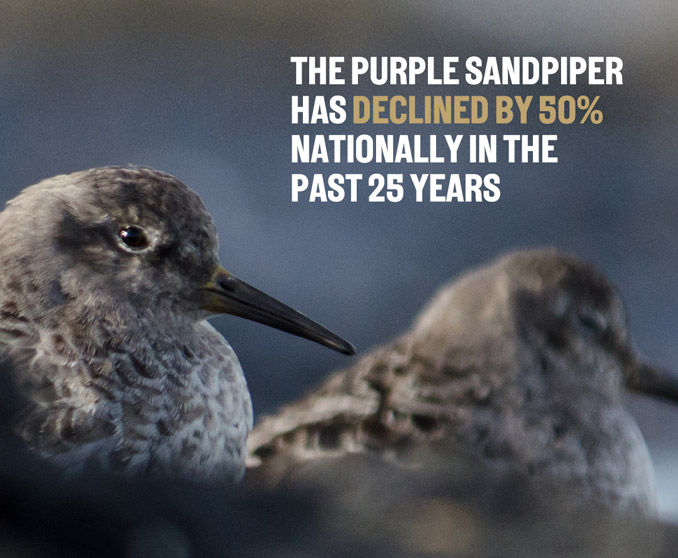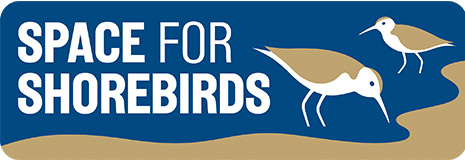Thinking Global
While Space for Shorebirds is acting locally, it’s important to think about the national and international picture. Some of these birds we share with other countries and continents in some cases.
Below we have shown the most recent population assessments for some of our shorebirds using the British Trust for Ornithology (BTO) Wetland Bird Survey data, which is a national monitoring scheme and the assessment of the IUCN (International Union for the Conservation of Nature).
The IUCN provides a globally accepted standard with which to measure and monitor species global populations over time to determine if they are under threat from extinction.
| Bird Species | National 25 year population trend from BTO WeBS (Wetland Bird Survey)* | International Union for the Conservation of Nature Global Assessment** |
|---|---|---|
| Purple Sandpiper | -50% | Least concern, decreasing population |
| Turnstone | -43% | Least concern, decreasing population |
| Curlew | -33% | Near threatened, decreasing population |
| Lapwing | -34% | Near threatened, decreasing population |
| Ringed Plover | -52% | Least concern, decreasing population |
As you can see all five of these local species are in decline nationally and internationally, which puts our efforts to help our Northumbrian shorebirds into a wider context.
Near threatened (NT) means a species that are close to becoming threatened with extinction or may meet the criteria for threatened status in the near future.
The Purple sandpiper has declined by 50% nationally in the past 25 years, the above BTO WeBS report explains that this decline and change in distribution of our wintering purple sandpipers can be partly explained by the population overall shifting further to the north, which could be attributed to the climate emergency.
*Frost, T.M., Calbrade, N.A., Birtles, G.A., Mellan, H.J., Hall, C., Robinson, A.E., Wotton, S.R., Balmer, D.E. and Austin, G.E. 2020. Waterbirds in the UK 2018/19: The Wetland Bird Survey. BTO, RSPB and JNCC, in association with WWT. British Trust for Ornithology, Thetford.
**IUCN website https://www.iucn.org, accessed on 29 May 2020.
Further Reading:
https://www.bto.org/our-science/projects/wetland-bird-survey
Photo by Tim Melling


